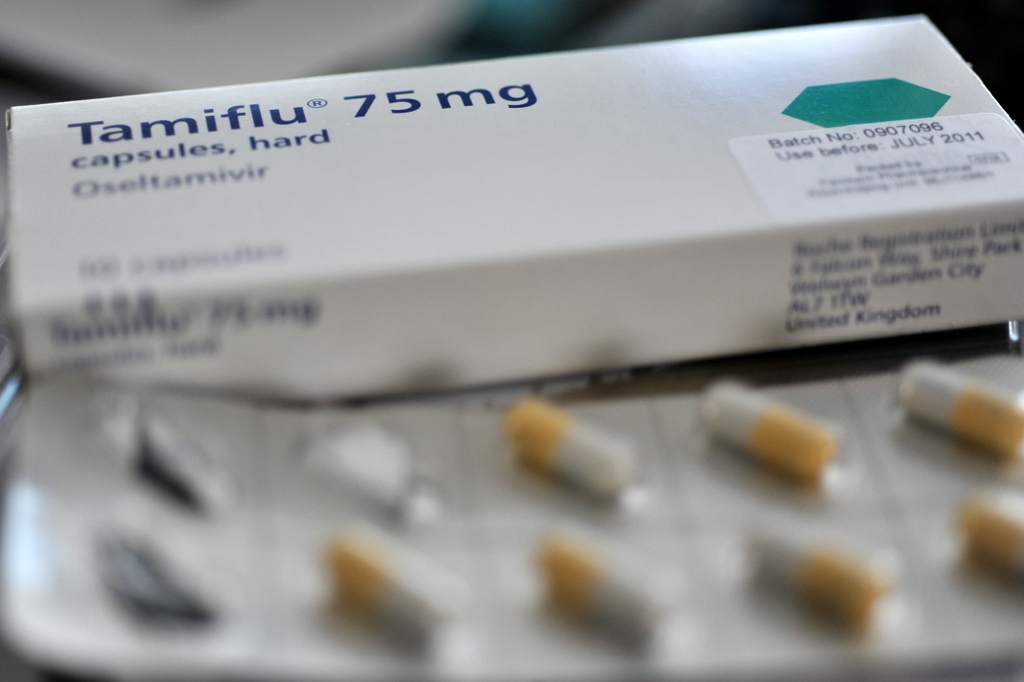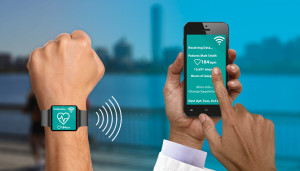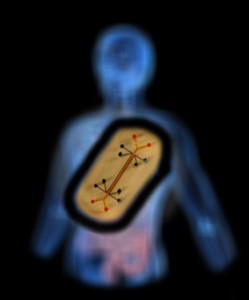
(Google Maps)
The Ebola situation in Dallas—with one patient death, two nurse exposures, dozens under quarantine, and talk last week of declaring a state of emergency in the city—has thrown into stark relief the gaps between public health and frontline clinical care. But those gaps also present opportunities to make public health data work harder and to change how doctors approach clinical care in times when events and information are changing at Internet speed.
That’s the gist of an editorial by Boston Children’s Hospital’s Kenneth Mandl, MD, MPH, published Monday in the Journal of the American Medical Association.
It comes down to making electronic health records (EHRs) work more flexibly, in ways that help promote situational awareness among clinicians during times of crisis and flag instances when a patient’s condition may require more attention than usual. Full story »
 Where is the next generation of therapeutic innovations going to come from? Population-level genomic studies? The fitness trackers on everyone’s wrist? Mining electronic medical records? People’s tweets, Yelps and Facebook posts?
Where is the next generation of therapeutic innovations going to come from? Population-level genomic studies? The fitness trackers on everyone’s wrist? Mining electronic medical records? People’s tweets, Yelps and Facebook posts?
How about all of the above?
What all of these things have in common is data. Lots of it. Some of it represents kinds of data that didn’t exist 5 or 10 years ago, but all of it is slowly beginning to fuel the pharma sector’s efforts to create the next blockbuster drug or targeted therapeutic.
At least, it should be. Full story »

(stanrandom/Flickr)
This winter, if your doctor suggests that you take Tamiflu, you might want to ask for a conflict of interest statement: a new study suggests that doctors who received payments from the makers of flu-fighting neuraminidase inhibitors—drugs like Tamiflu® and Relenza®—were more likely to view the drugs’ prowess in a favorable light.
In the study, published last week in the Annals of Internal Medicine, a team led by Boston Children’s Hospital’s Florence Bourgeois, MD, MPH, tallied up the financial connections of doctors who participated in 37 reviews of neuraminidase inhibitors.
While it’s been unclear for years whether these drugs really are effective against influenza, it was crystal clear that financial relationships are associated with positive reviews. Full story »
 You are what you eat, the saying goes. For some conditions (think cardiovascular disease or type 2 diabetes), there are clear connections between diet, health and illness.
You are what you eat, the saying goes. For some conditions (think cardiovascular disease or type 2 diabetes), there are clear connections between diet, health and illness.
For breast cancer, the picture is less clear. Many epidemiologic and laboratory studies have examined the Western diet (in particular, cholesterol) and its relation to breast cancer, with conflicting results.
“There’s been a raging debate in the field,” says Christine Coticchia, PhD, who works in the laboratory of Boston Children’s Hospital’s Vascular Biology Program director, Marsha Moses, PhD. “The biology of cancer and of cholesterol are so complex, and there are many subsets of breast cancer. In order to find any connections, you have to ask very specific questions.”
Banding together with Keith Solomon, PhD, in Boston Children’s Urology Department, Coticchia and Moses asked whether dietary cholesterol might encourage progression of the most aggressive, so-called “triple-negative” breast tumors. As they report in the American Journal of Pathology, they found a big impact, at least in mice. But it’s too early to say just yet that cutting back on cholesterol will help women avoid breast cancer. Full story »

Listeria bacteria on a plate. The biology of HIV/AIDS suggests T-cells have a hitherto unrecognized way of killing pathogens like these.
The immune system, despite its immense complexity, really has only a few ways to kill bacteria:
- Neutrophils and macrophages can capture and digest extracellular bacteria (ones that live free in tissues and the bloodstream).
- Peptides (protein fragments) can punch holes in bacterial membranes or cross the membranes to disrupt bacterial processes.
- T-cells can kill cells infected by intracellular bacteria (ones that take up residence within cells).
It’s this last mechanism that I want you to pay attention to. The conventional wisdom has long held that T-cells can only kill intracellular bacteria indirectly by eliminating the cells they’ve infected. But a paper by Judy Lieberman, MD, PhD, of Boston Children’s Hospital’s Program in Cellular and Molecular Medicine, reveals that T-cells have a hitherto unnoticed way of directly killing intracellular bacteria And she only found it because of HIV/AIDS. Full story »
 You just had a great meal at a restaurant. So you grab your phone and fire off a glowing review on Yelp.
You just had a great meal at a restaurant. So you grab your phone and fire off a glowing review on Yelp.
Consider the opposite scenario: You just had a horrible meal at a restaurant. So you grab your phone and fire off a scathing review on Yelp.
Now here’s one more: You had a great meal at a restaurant but woke up vomiting the next morning. Do you grab your phone and fire off a complaint on Yelp that your dinner made you sick?
That’s what a trio from Boston Children’s Hospital’s Informatics Program, are banking on.
A report in Preventive Medicine, authored by John Brownstein, PhD, Elaine Nsoesie, PhD and Sheryl Kluberg, MSc, judges Yelp’s usefulness as a food poisoning surveillance tool. Their efforts are part of a growing trend among public health researchers of trying to supplement traditional foodborne illness reporting with what we, the people, say on social media.
Full story »
 Privacy policies are a sore point for Internet users. At least once a year the pitchforks and torches come out when a company like Facebook or Twitter changes its policies around how it uses, sells or secures users’ data—things like browsing habits, phone numbers, relationships and email addresses.
Privacy policies are a sore point for Internet users. At least once a year the pitchforks and torches come out when a company like Facebook or Twitter changes its policies around how it uses, sells or secures users’ data—things like browsing habits, phone numbers, relationships and email addresses.
You don’t hear as much hue and cry over the privacy of mobile health apps, where people store and track what are literally their most intimate details. But perhaps you should.
Because in fact, a recent survey of mobile health apps led by Boston Children’s Hospital’s Kenneth Mandl, MD, MPH, finds that only about 30 percent of mobile health apps have any kind of policy covering the privacy of users’ data. Full story »

A good biomarker is one whose levels go up or down as a patient’s disease worsens or wanes. A great biomarker also gives key insights into disease development. A really great biomarker does both of these things and also serves as a treatment target.
With a protein called netrin-1, Edward Smith, MD, and Michael Klagsbrun, PhD, seem to have hit the trifecta. In a recent paper in Cancer Research, they report a clear relationship between urine netrin levels and medulloblastoma, the most common malignant brain tumor of children.
And show that netrin fuels the tumor’s invasion into healthy brain tissue.
And that blocking netrin may, at least in the laboratory, check the tumor’s spread. Full story »

Fitbit, Jawbone, Nike, Withings…a lot of companies are already in the wearable/mobile health technology and data tracking game. But a couple of really big players are stepping on to the court.
At their most recent Worldwide Developers Conference, Apple announced both an app and a framework—Health and HealthKit—that will tie in with various wearable technologies and health apps. HealthKit will also feed data into electronic medical record (EMR) systems like Epic, which runs at some of the largest hospitals in the country. And rumors abound that an upcoming Apple smartwatch (iWatch? iTime? Only Tim Cook knows right now) will carry a host of sensors for tracking activity and health data.
Google also wants to get into the game with a health data framework called Fit that they announced at their I/O conference in June. Unlike Apple, its strategy seems more focused on providing a standard way for trackers, devices and apps from different manufacturers to talk to Android Wear devices.
What will entry of these big players mean? We asked Michael Docktor, MD, clinical director of Boston Children’s Hospital’s Innovation Acceleration Program. Full story »

















